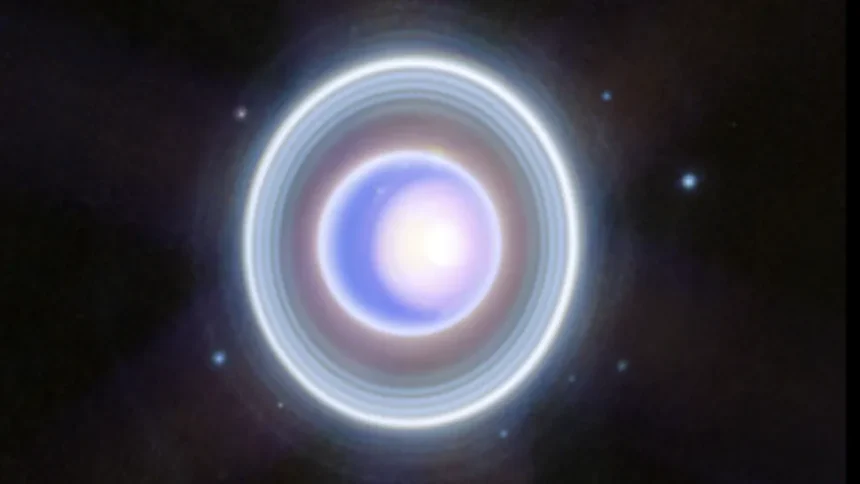Uranus traffic jams– For decades scientists have been puzzled by a strange anomaly about Uranus. It is the ice giant of our solar system. Uranus belts are weak. They are unlike the belts of their gas-giant neighbours. Jupiter and Saturn’s belts boast strong radiation. Uranus belts are about 100 times weaker than expected. This has been a long mystery. But a new theory about Uranus traffic jams suggests a strange explanation.
We understand this odd thing from data collected by Voyager 2. It flew by Uranus in 1986. Voyager 2 confirmed the weak radiation belts. It also revealed a surprising fact that the Uranus magnetic field is unlike any other planet. It is tilted at a dramatic 60 degrees from its spin axis. It is oddly shaped like a corkscrew, not a sphere.
“The radiation belts around Uranus are weak. This has been a long mystery,” A leading planetary scientist. Our simulations suggest the planet’s tilted Uranus magnetic field might be the key.
What are Uranus Traffic Jams?
The research team’s lead author used computer simulations. They modelled the behaviour of charged particles in Uranus’ magnetic field. These are mostly protons and electrons. A planet’s magnetic field usually traps them, forming radiation belts. However, the simulations for Uranus showed something unexpected.
“We found that Uranus Radiation Belts could create regions. In some, charged particles travel slower and become compressed. In others, they drift faster and spread out,” says the lead author. The author used computer simulations. They modelled the behaviour of charged particles in Uranus’ magnetic field. These are mostly protons and electrons.
A planet’s magnetic field usually traps them forming radiation belts. However, the simulations for Uranus showed something unexpected. “This is analogous to how traffic jams form on a highway. When cars slow down, it creates denser traffic, while faster speeds lead to a more spread-out flow.
The Theory and the Mystery
When reviewing data collected by Voyager 2 we stumbled upon an intriguing phenomenon. In 1986 the spacecraft flew by Uranus. It gave valuable insights into the planet’s makeup. One key finding was that Uranus has weak radiation belts. This was expected.
However, Voyager 2 also found a shock Uranus’ magnetic field breaks all the rules. Its spin axis tilts its magnetic field at a remarkable 60 degrees. This creates an unusual corkscrew shape. It is unlike the typical spherical form of other planets.
“This is an exciting new theory. It sheds light on a long-standing mystery,” says the study’s lead author. They were not involved in the study. Further investigation into future Uranus exploration could help us solidify this explanation. They will give a fuller picture of the planet’s unique magnetic field.”
Future Exploration of Uranus
While this theory offers a compelling explanation it is still in its early stages. No missions are planned to Uranus now. But future exploration could test and refine this “Uranus traffic jams” model.
Scientists could confirm this by measuring the particle distribution within Uranus’ magnetic field. They could see if these jams are the cause of the planet’s weak radiation belts.
Scientists continue to study Uranus’ puzzling magnetic field and radiation belts. This is an ongoing research project. This investigation shows humanity’s relentless pursuit.
It is to uncover the secrets of our solar system’s enigmatic and awe-inspiring planets. Think of it as trying to unravel a complex tapestry. Each new discovery reveals a bit more about the patterns. These patterns shape our celestial neighbourhood.
Studying about Uranus traffic jams can teach us much. It can tell us about how our solar system formed and changed. This knowledge will improve our understanding of the universe.
For more visit Science Category.






